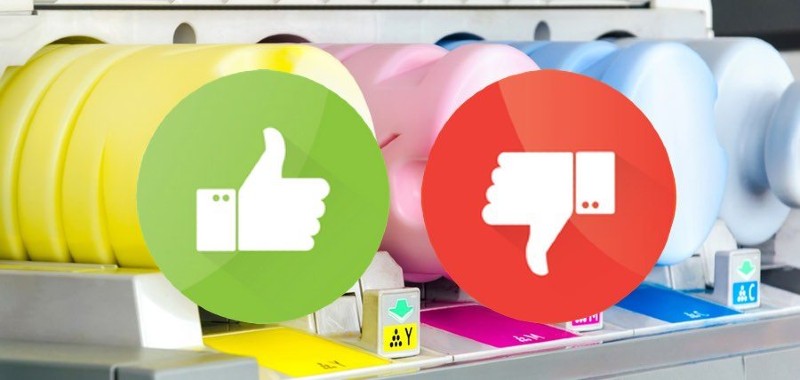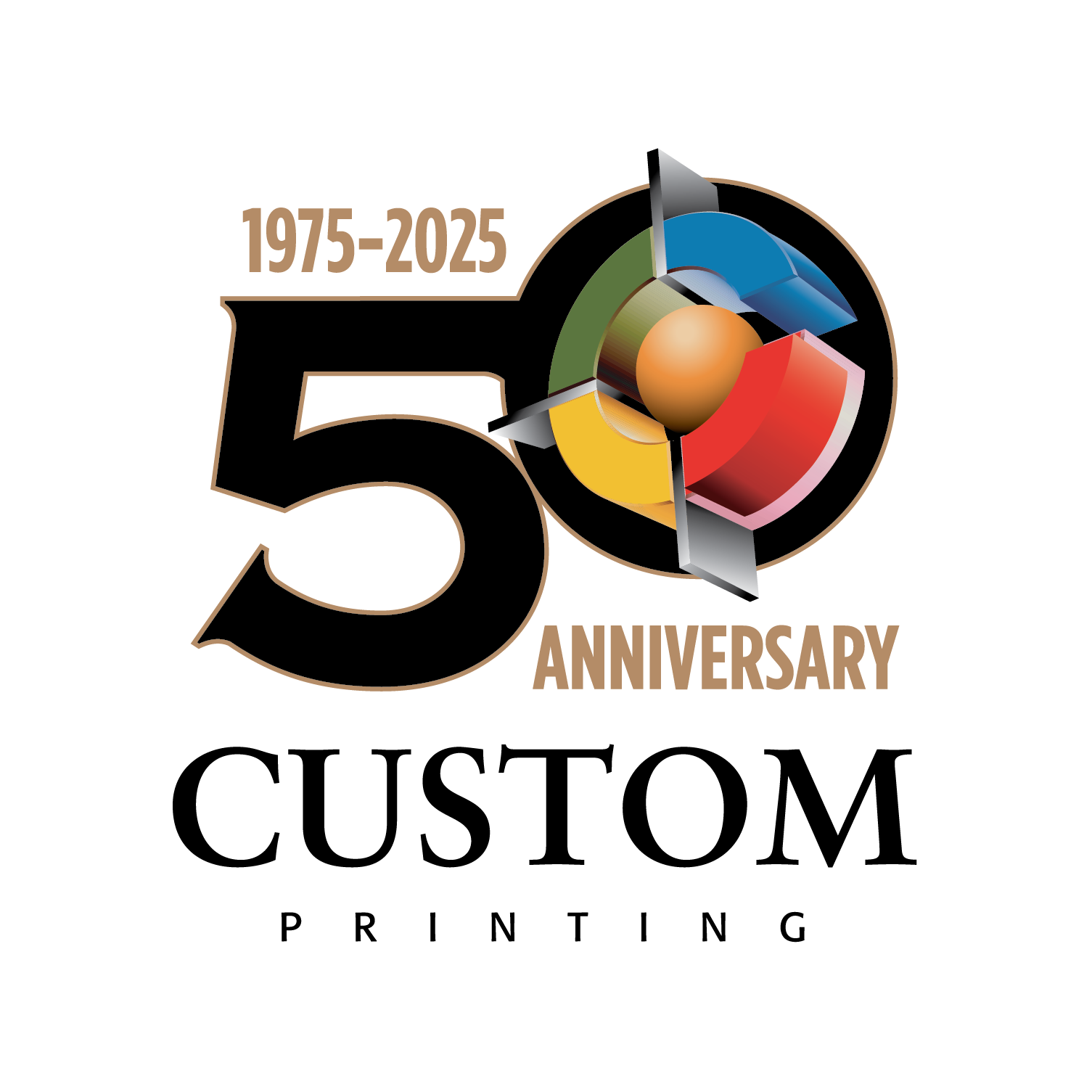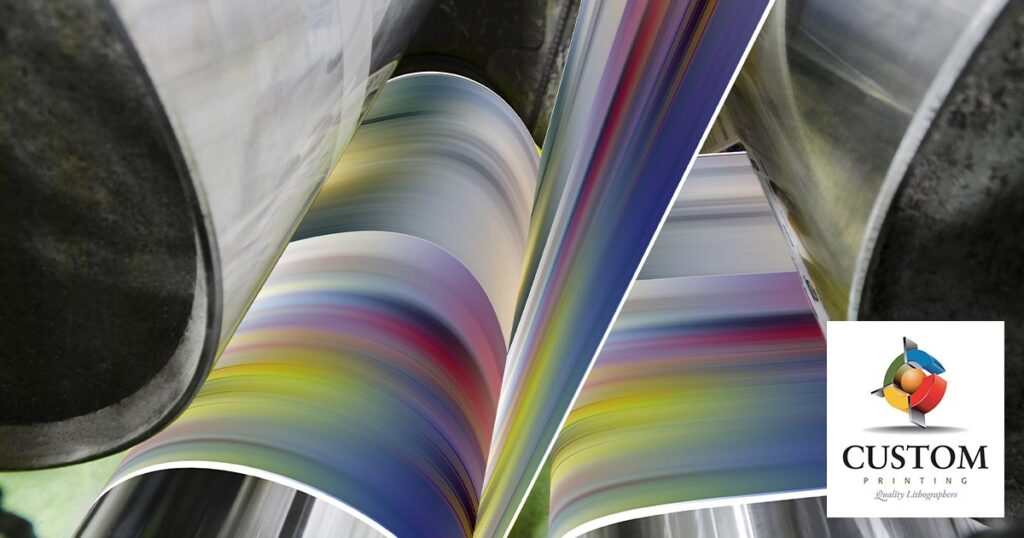Professional printing for many seems like the type service where one goes with a digital image and asks for it to be reproduced in different sizes, on different types of paper, and prints. How that gets done mechanically though tends to be a mystery for many. So, when the question comes up whether a print job should be done in digital output or offset printing, a lot of folks get a deer-in-the-headlights look. However, there is a huge difference between the two, and offset printing clearly has certain advantages, so anyone relying on print services should understand and be aware of these differences before placing their next order.
Offset Printing, Defined
Unlike the typical digital printing, offset printing uses an older technology of images applied to aluminum plates. The plates then transfer the image to a rubber mat which works in a circular fashion. As the rubber mat spins, it then transfers the image to the paper sheet run through and the print is produced. This process, although it seems old-fashioned, can easily produce thousands of prints quickly, and it is the number one reason why offset is still used so heavily when a client needs a large run of print documents quickly. The output is crisp, clear, and well-finished, and the method has been a standard in large printing runs for years.
Digital Printing Drawbacks
The primary method of digital printing utilizes toners that spray the ink onto a sheet of paper to produce the image. The sprayed toner then either dries quickly, or sealed by heating that is applied by the printer. The sheet then comes out with the ink finished instead of still being wet in most cases. This sort of production is good for proofing, when one just needs a few copies produced, or for a single run, but it quickly becomes increasingly expensive with large orders.
In general, while computers and digital print methods have been very good for short outputs, custom prints, and small jobs, it cannot realistically compare in cost, efficiency, or even quality when dealing with larger runs. Digital print just consumes too much, takes too long, and wears down much faster requiring component replacements in the machinery, and these costs are factored into the amount charged for a print.
Real Time Impacts
Offset printing gives clients the following right up front:
- Lower costs on large runs and extensive print jobs
- Extremely advantageous on bulk print orders, the more printed the greater the discount
- Very inexpensive when the print job utilizes black & white only
- Works great with static designs that do not change from sheet to sheet
- Avoids some of the smudging and resource loss that occurs with toners failing during the run
- Handles large print paper specifications very well and custom paper is not a problem
- Provides the highest quality level of printing even against digital, in both detail and color
- Utilizes special inks not available in toner choices
Many offset services can also handle the back end of an order as well when it needs to be distributed from the print plant directly to the destination. These services are often bundled in the order, to be provided after the prototype run and initial specification proofing is completed, and confirmed by the client before delivery. Using this feature streamlines the order and enhances the speed of a print run distribution to multiple centers without middle-stops along the way. Destination points receive their portion of the print order, completely packed and ready to open right from the production center.

Deciding Which Route to Go
Both digital and offset printing have their advantages, but offset printing provides the professional step above in terms of the output, especially when one needs to have a high production yet still maintain a high level of quality at the same time. Some might ask whether just simply running a print on a color copier machines is an alternative. The proof is in the production. Offset provides a finish that has for years been the industry expectation and delivery when it comes to high-quality paper communications. Utilizing a copier for the same simply messages poor consideration for readers and recipients and stands out as fundamentally going cheap.
Why Print at all In the Digital Age?
Granted, everybody is carrying around a smartphone or tablet and easily have a laptop in their bag for more extensive interaction. However, print documents still have a strong appeal for tangibility. And when batteries fail or people simply want a break from their screens, the ubiquitous print document still functions extremely well for quick reference, folding in one’s pocket or even keeping as a memento of a particular event or participation. With how fast digital files get buried and “disappear,” paper printing with high quality via offset printing continues to hold its own, particular in the environment of mass communication on a simultaneous schedule.
Again, it is entirely possible to run a print job via digital, but when one really considers all the advantages available with offset printing, there is no longer a good argument for it when a large job needs to be produced in a timely fashion. Save the digital route for smaller jobs, proofing, special limited productions, and custom work with unique identifiers on each print. Go with offset printing when it matters for a large production. You will not regret the choice.


